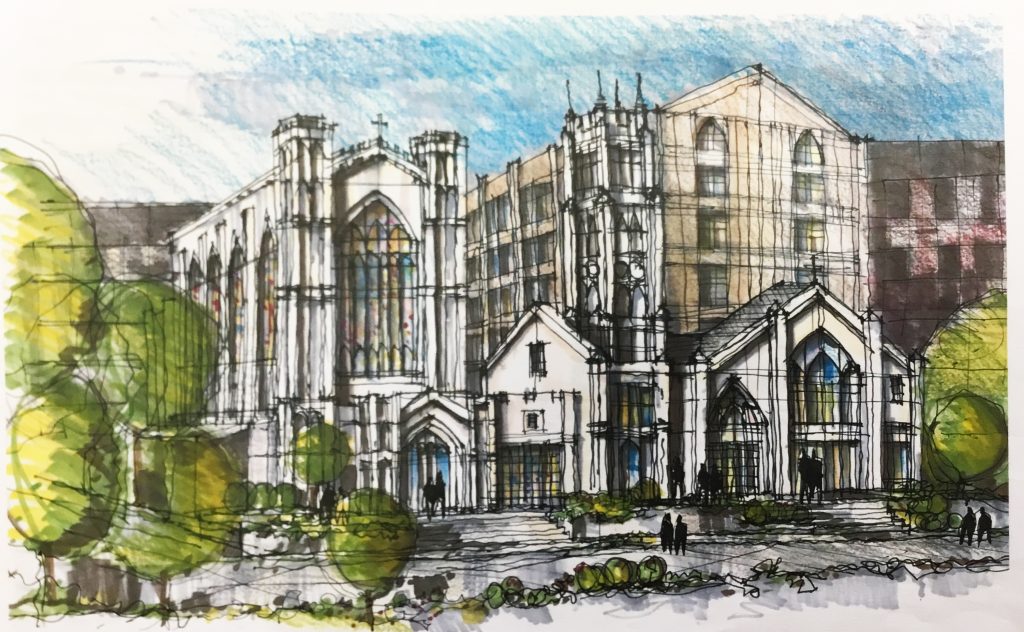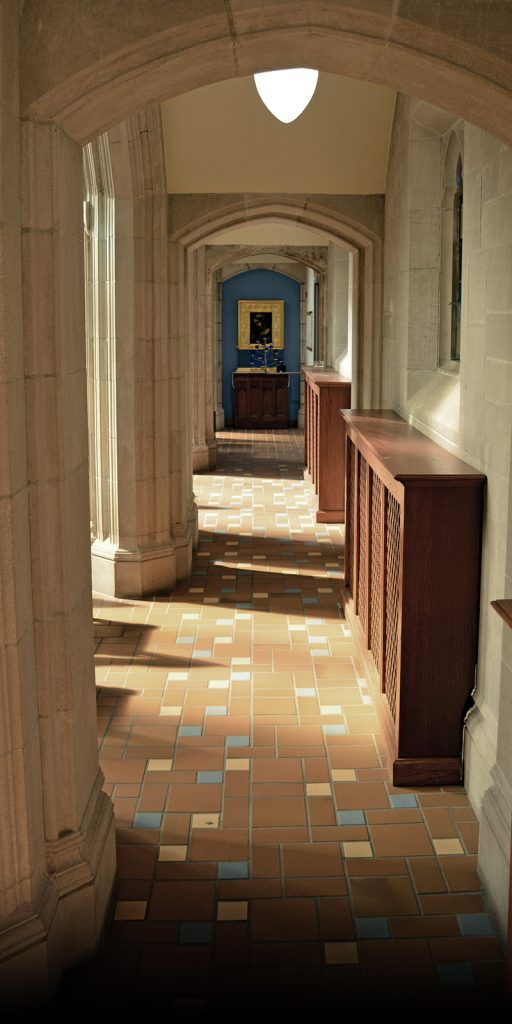Over the past few years, your vestry has been considering our options concerning what to do with Canterbury House. On Sunday, January 21, we held our annual parish meeting and the heart of that meeting was a presentation regarding the future of Canterbury House. An introduction was given by Fr. Sean, and a report was given by John Paul Buzard on behalf of the Vestry and Building Committee.
Here is a link to the entire report.

RECTOR’S INTRODUCTION TO THE BUILDING COMMITTEE / VESTRY REPORT TO THE ANNUAL MEETING, CHAPEL OF SAINT JOHN THE DIVINE 1/21/2018
The Reverend Sean Ferrell
In this location in the annual parish meeting, I normally deliver an annual address. This year, instead, I am introducing a report from your vestry concerning the work we have done with experts in discerning a future for our Canterbury House.
Five years ago, I invited your vestry to participate in an exercise to help think about our parish with fresh eyes. That set us on a course to think about our ministry and how we might deal with the deferred maintenance and systemic issues of our Canterbury House. In the process, your vestry and I discovered how Canterbury House was inhibiting the ministry we do both because of its design and because of its condition.
The longer we looked at the building’s condition the more clear the issues became. We discovered that the issues were more than just deferred maintenance or cosmetic in nature; they were and are systemic. Vestry member Eileen Guest created a display with photographs to document many of the issues. If you need a refresher, it can be found in our parish hall.
During my time as your rector, I have heard you and our vestry say, “we cannot do nothing.” I couldn’t agree more. Canterbury House, in its current iteration, has served us for many years. I thank God for it. This has been a place where good ministry has happened. Canterbury House has been a part of our sacred space and I am thankful.
While you consider your own thankfulness, I want you to also remember that this Canterbury House was created on a small, if not inadequate budget and was not large enough to appropriately serve ministry needs here on day 1. It was built in a time when the majority of funds for the then student ministry here came from the three Episcopal dioceses in Illinois. (Now, there are only two.)
Today, no diocesan budget supports the work we do here. And that’s appropriate. We are now a parish, self-supporting and self-sustaining, because our previous rector insisted that the viability of this place should not depend on shrinking diocesan budgets, and nor should the congregation here (made of people of all ages and relationships with the University of Illinois, Urbana-Champaign) be made to cease to exist at the whim of a bishop. (I have twice seen a bishop shut down a college chaplaincy, and disband their congregations.)
Before we became a parish in the 1990s, our diocesan bishop would have had canonical permission to sell the property out from underneath us and disband this congregation on a whim because the canons had no protections for college chaplaincies. Yes, Tim was smart. I thank God for his leadership.
Therefore, I think we must remember and celebrate our happy memories in this Canterbury House and the good ministry that has happened here over the past five decades. At the same time, I don’t think we can allow ourselves to continue to limp along, self-impeding the ministry we do, because of our affection for the past. Or to use a biblical analogy, we cannot allow affection for our time in the wilderness to keep us from entering into God’s promised-land.
Just imagine if the Israelites had stayed out there in the desert. Some of them wanted to stay. Some of them never entered God’s promised future. They had wonderful stories of how God fed them bread from heaven, manna in the desert. Their sacred space was movable and temporary, but it was still sacred to them. Some of them just couldn’t imagine a different future with greater permanence and stability.
I want to invite us to consider an open future, with open possibilities.
The report continues on page two of this file.

